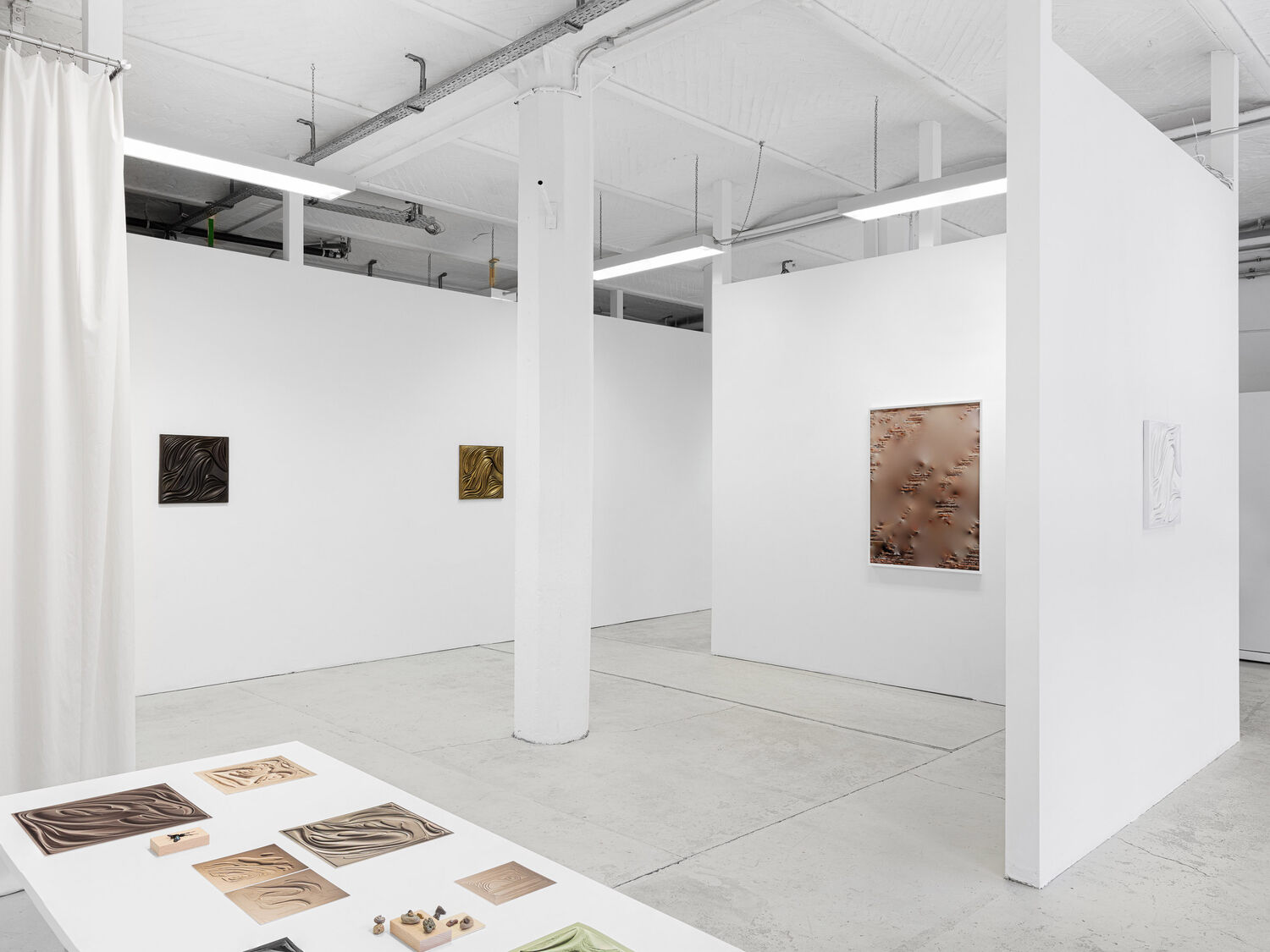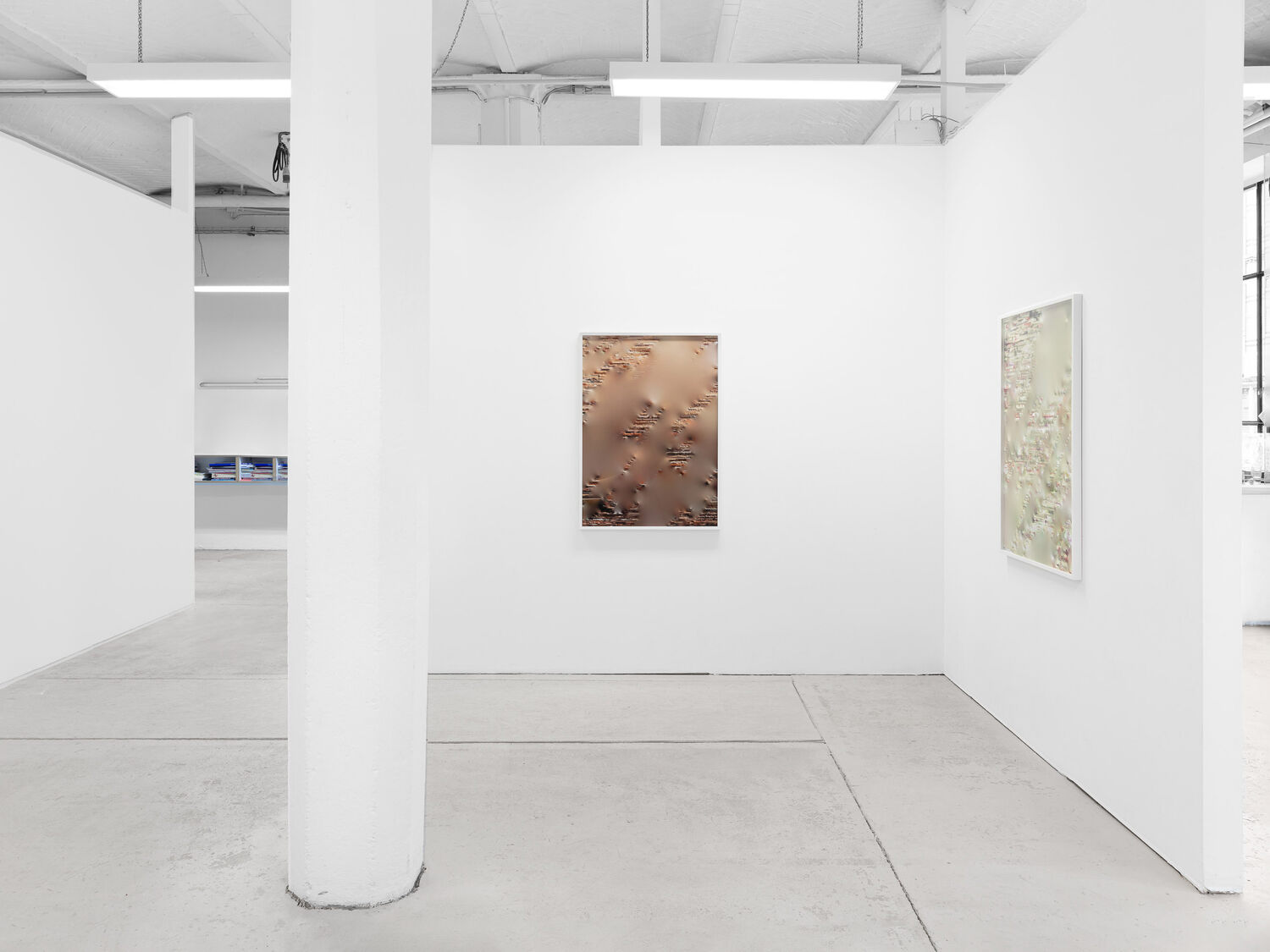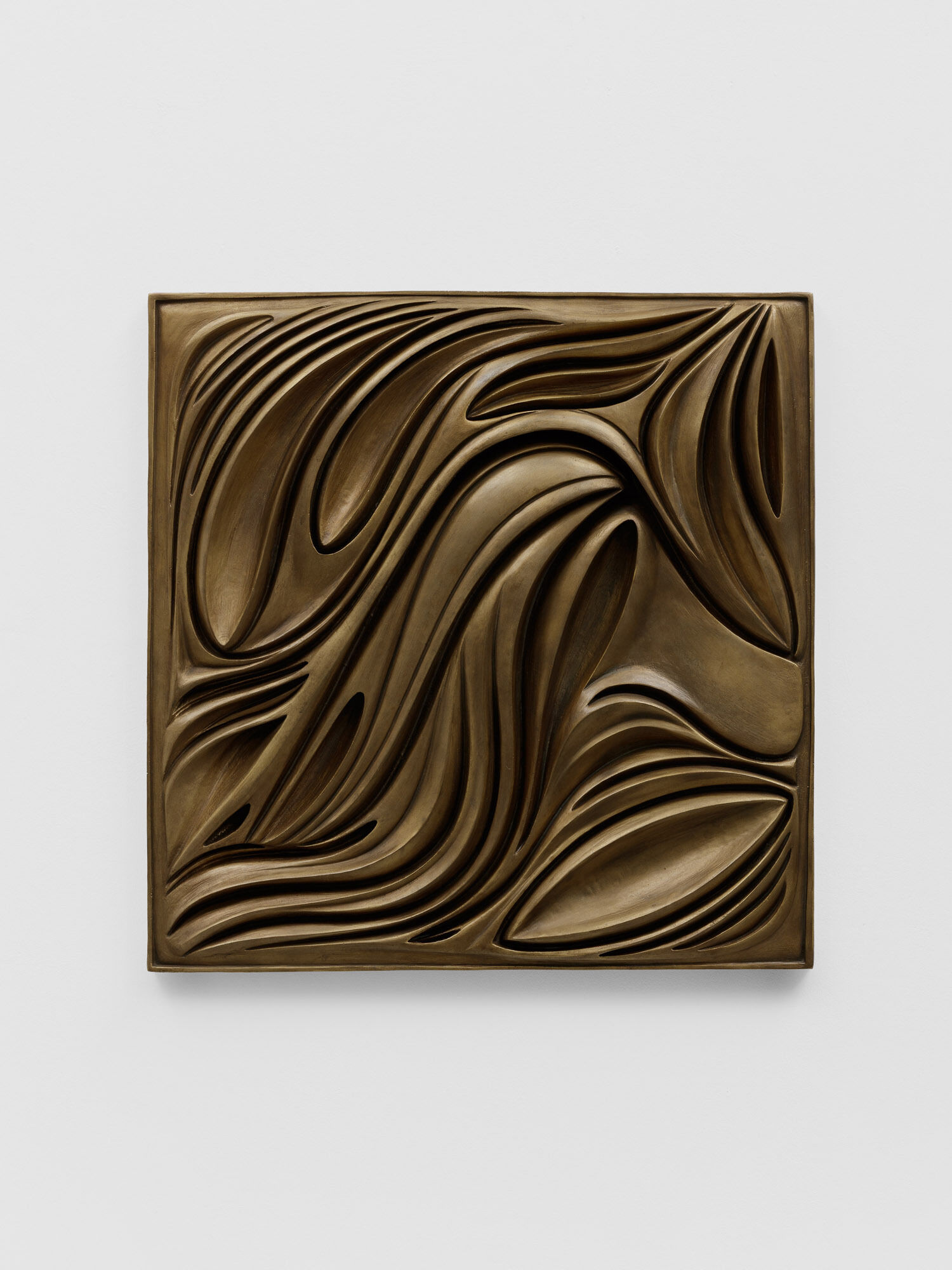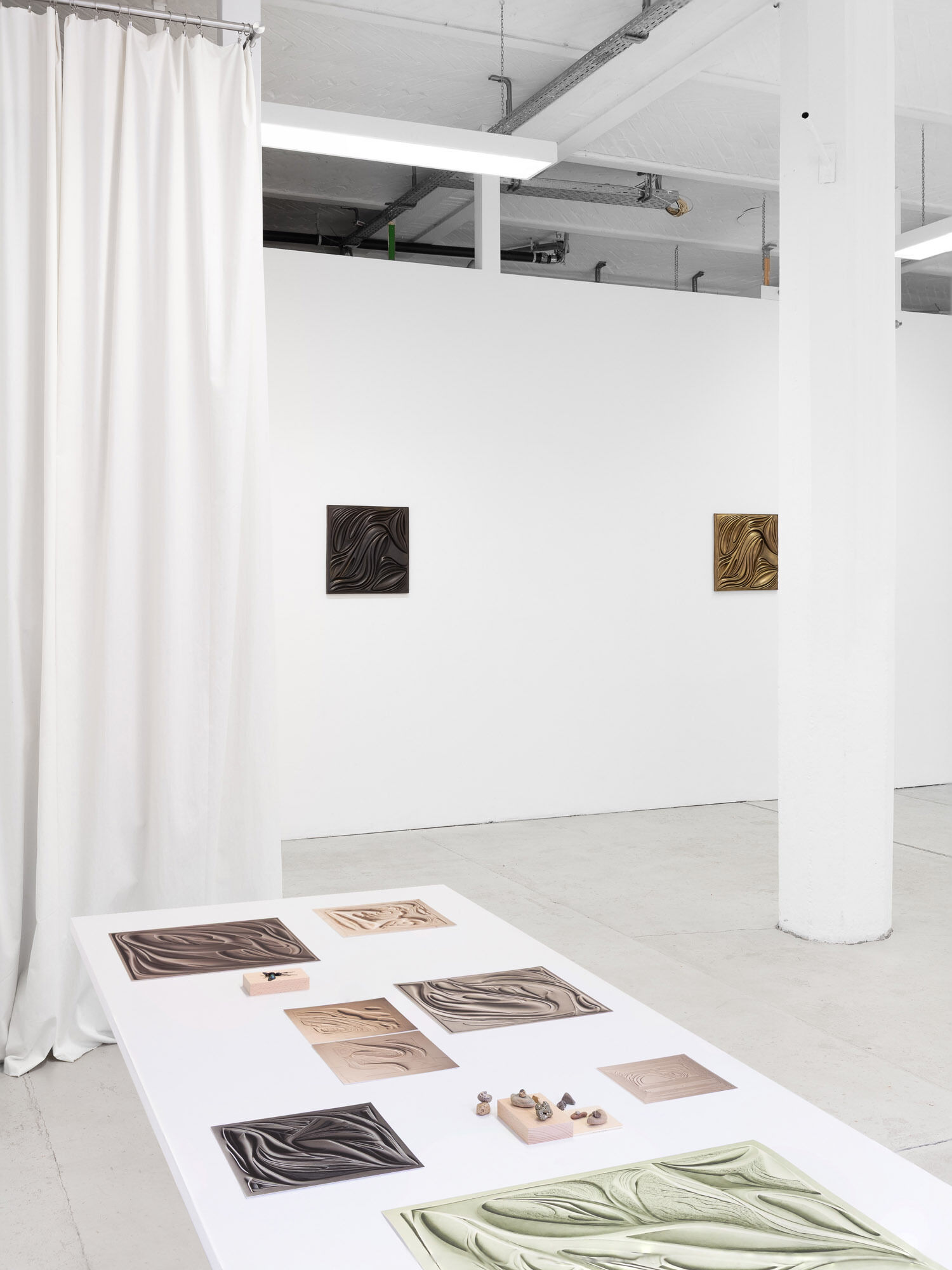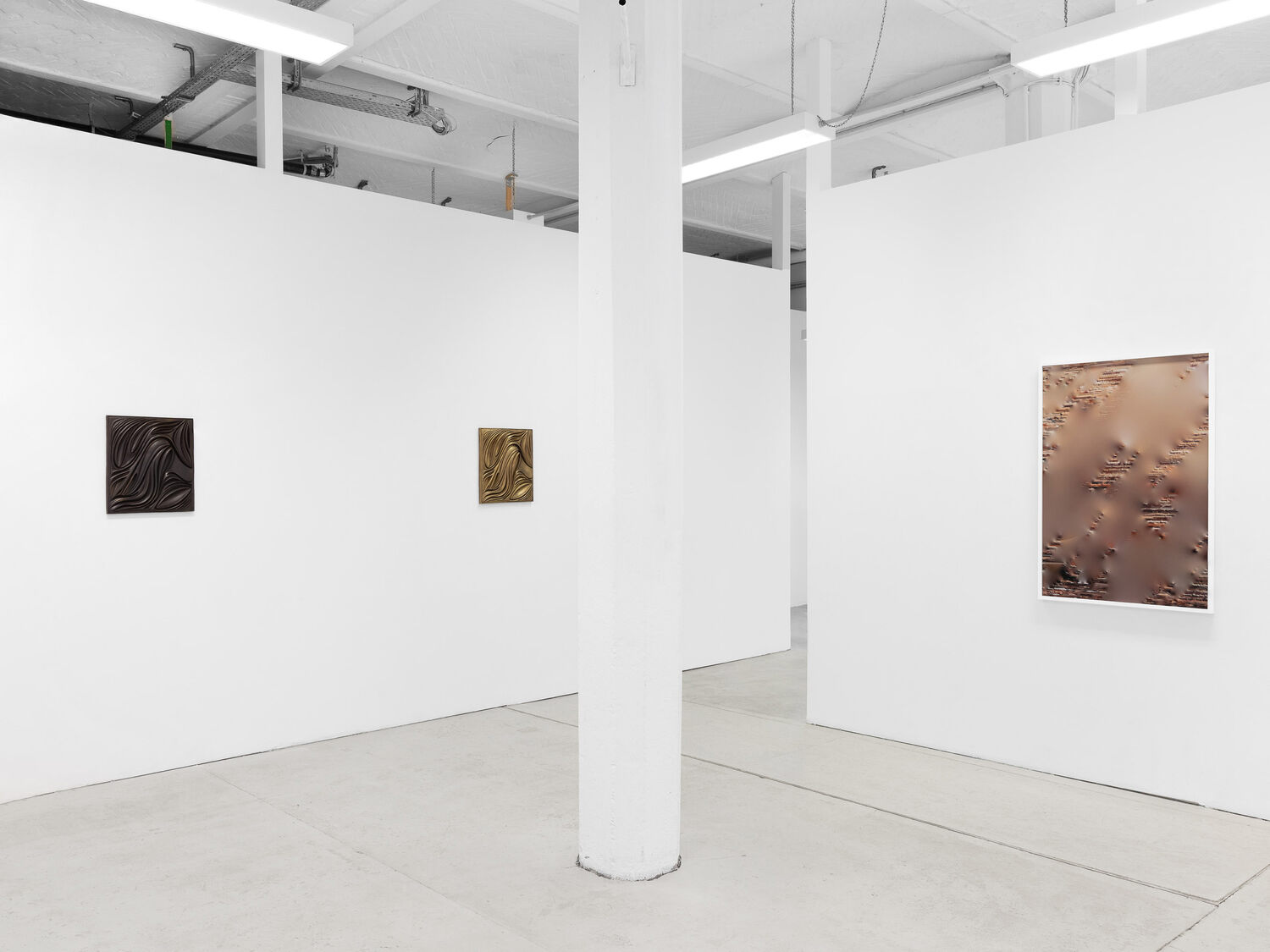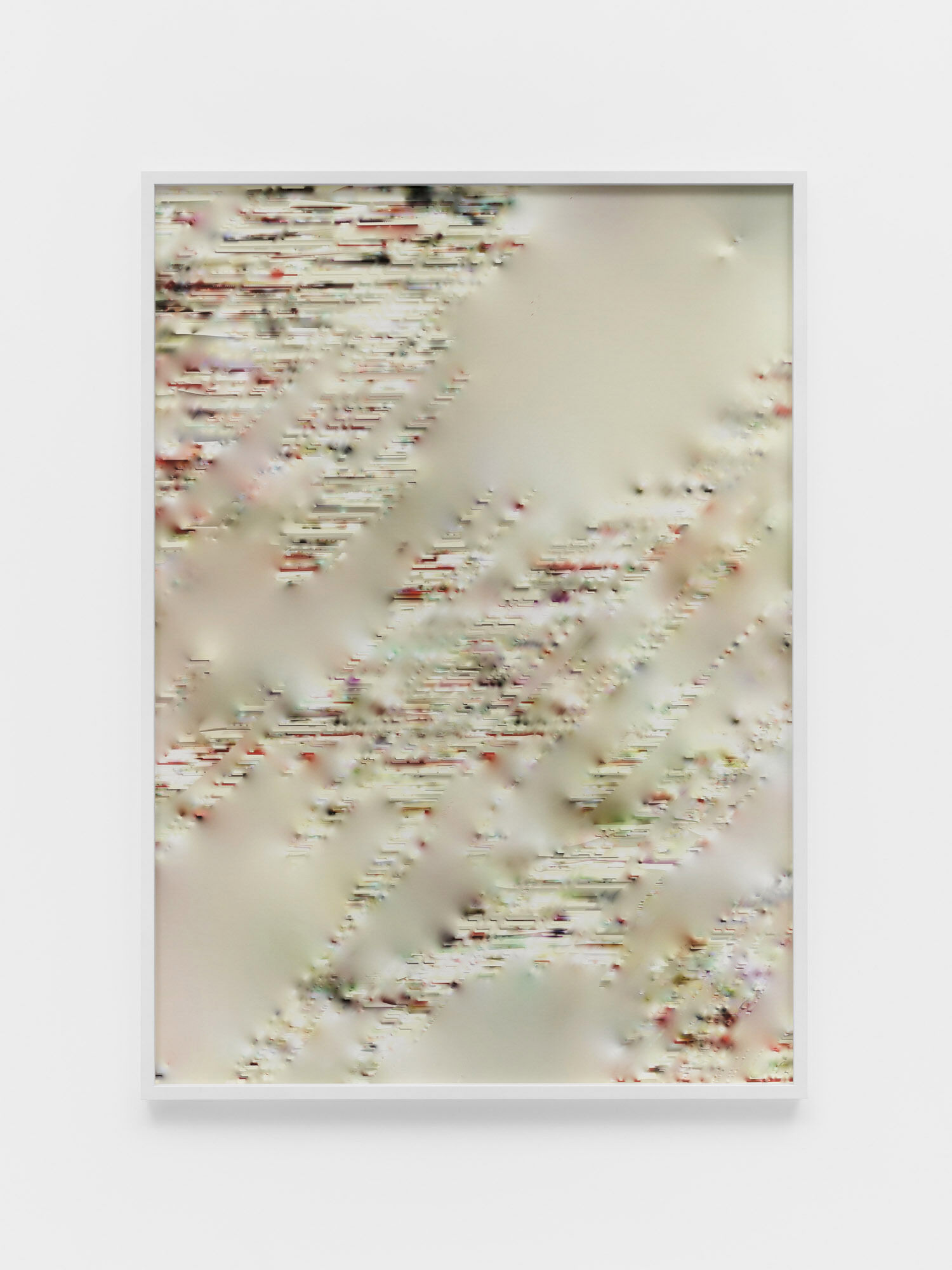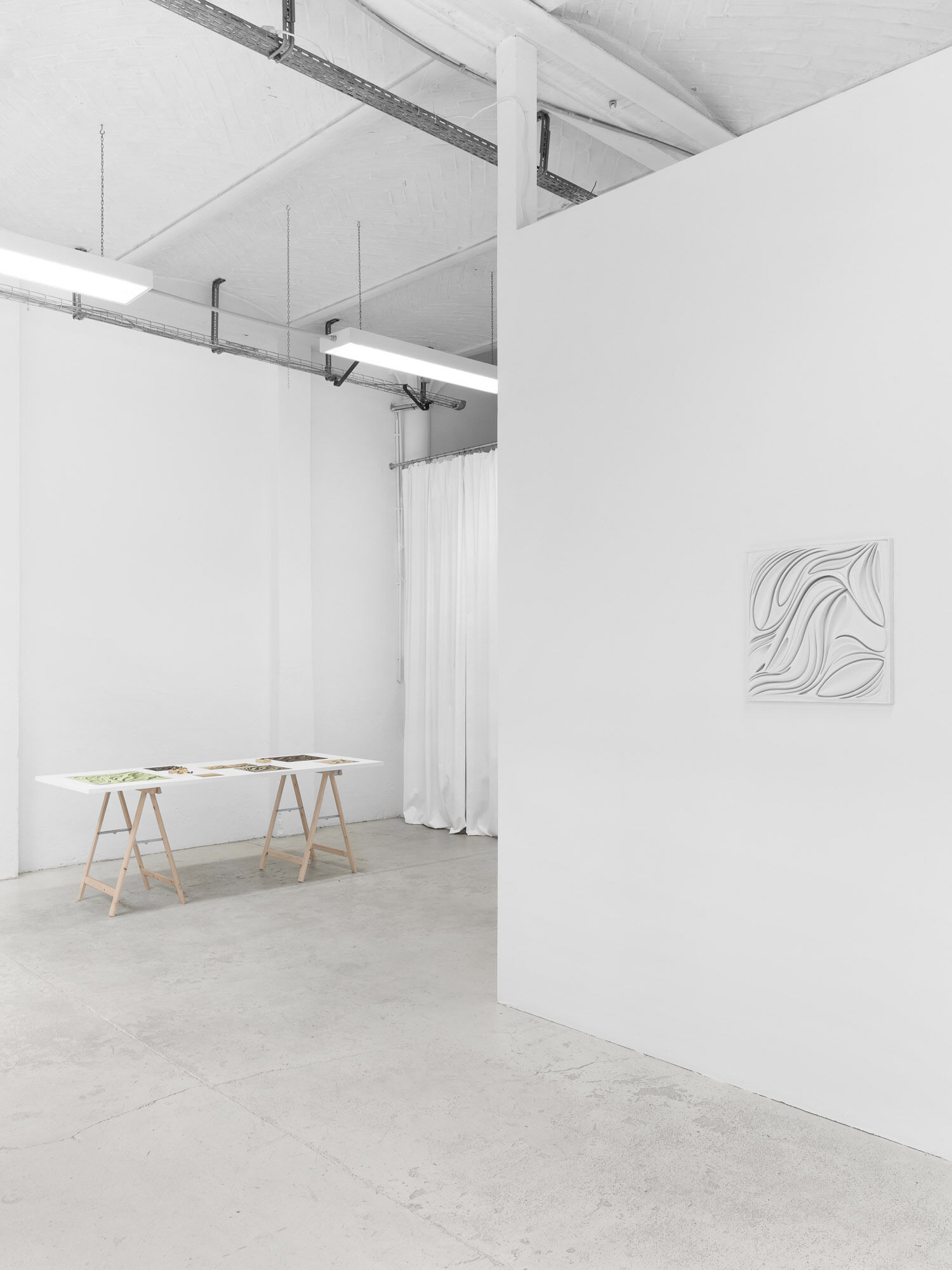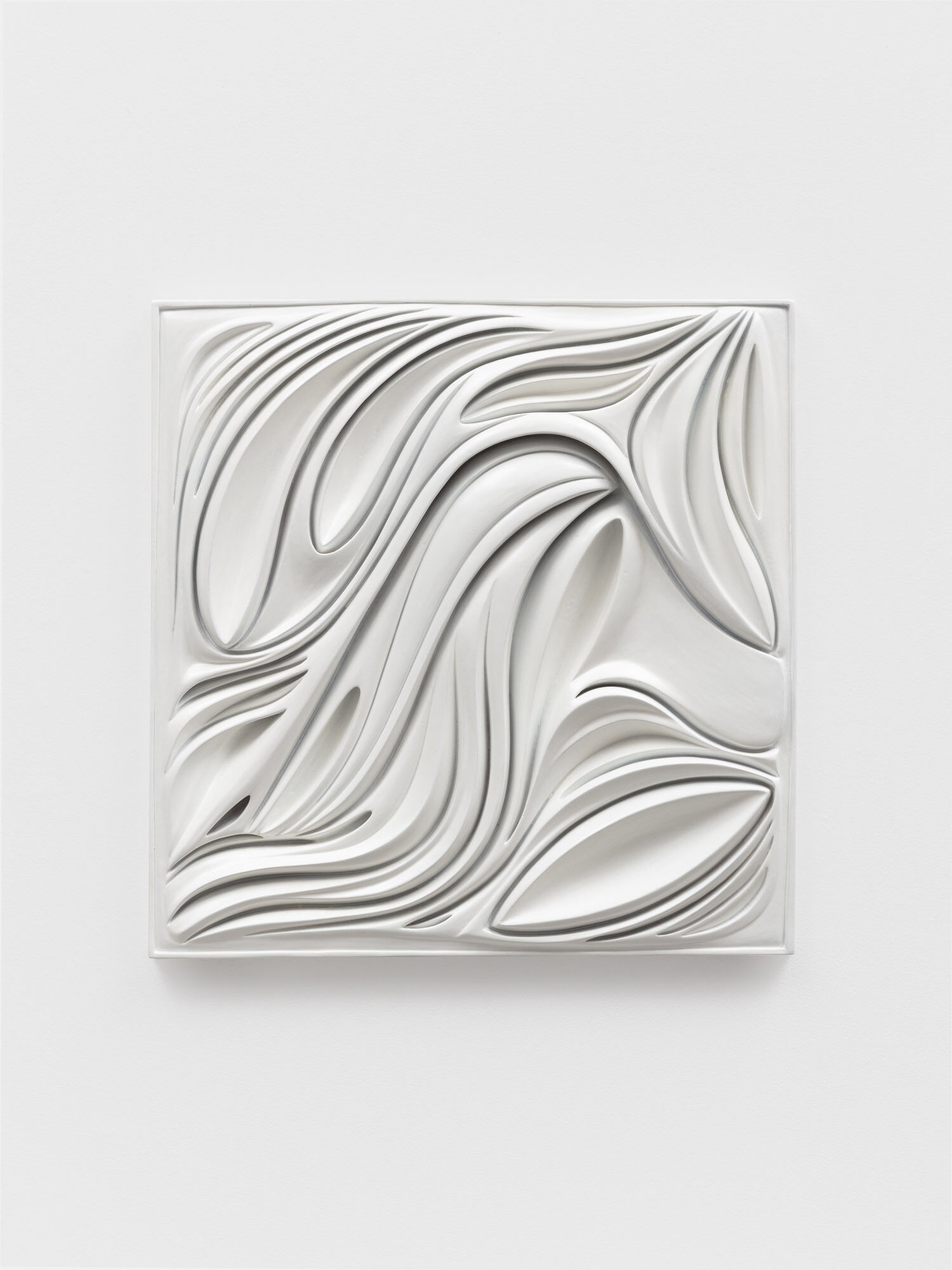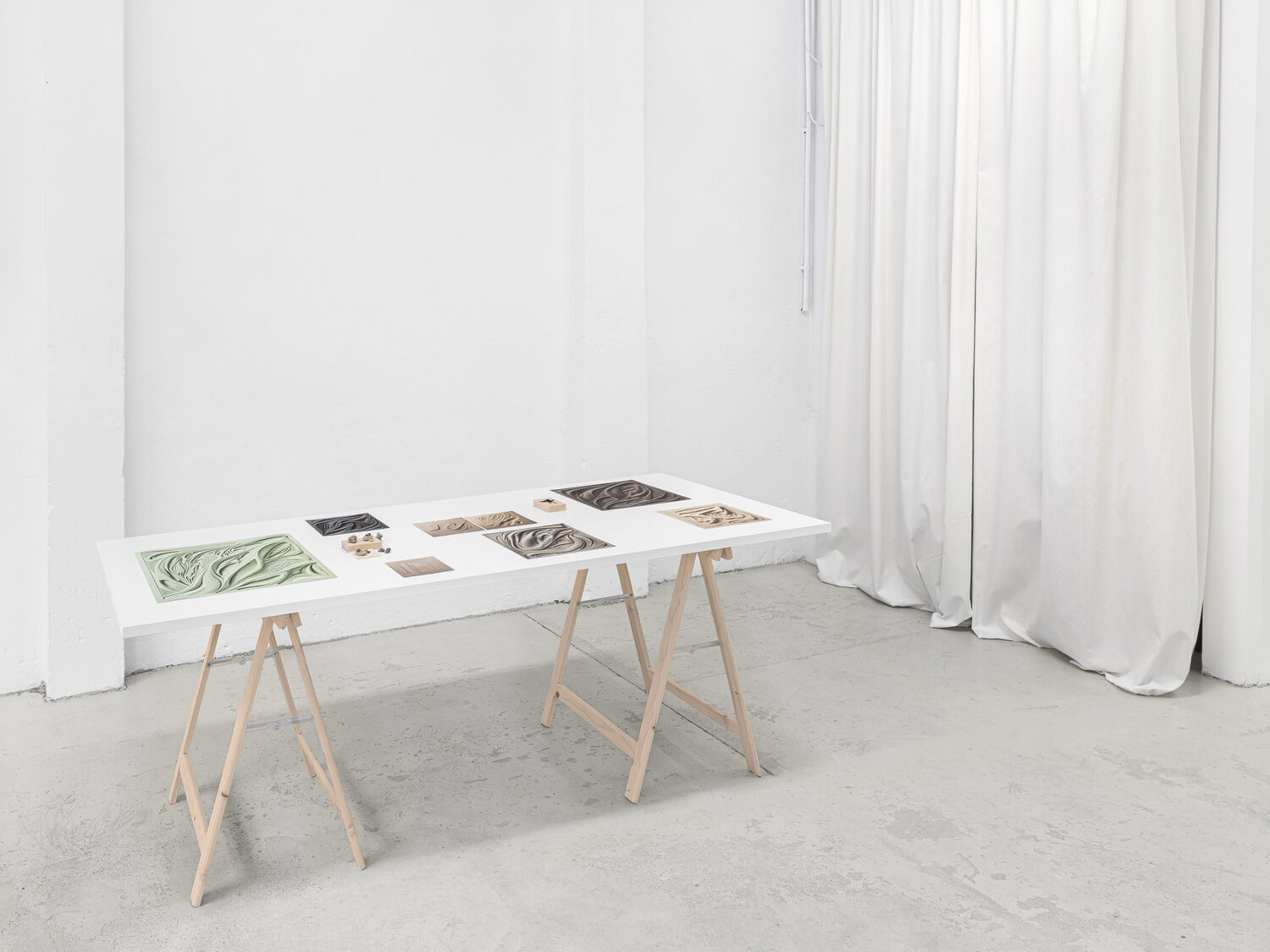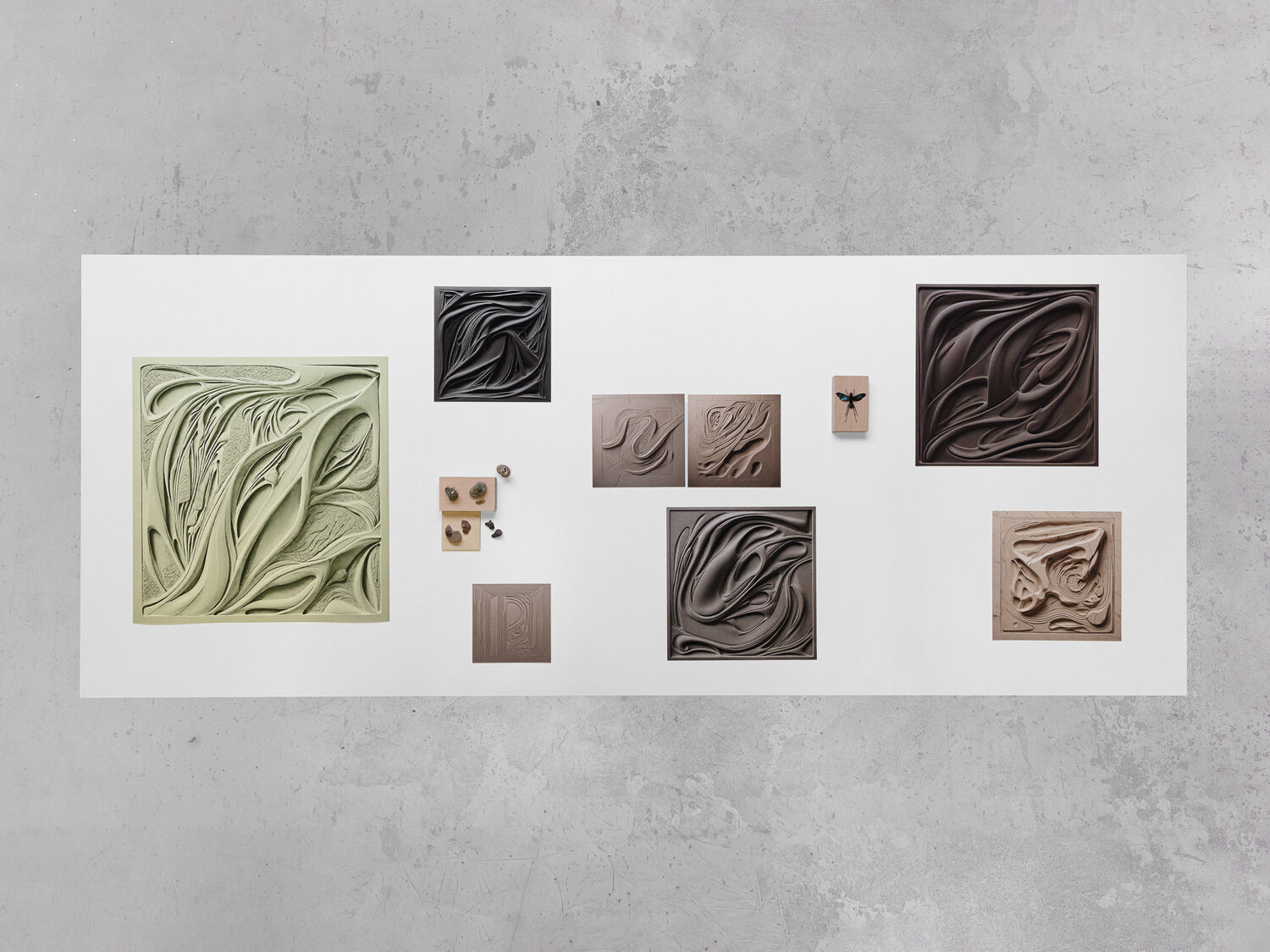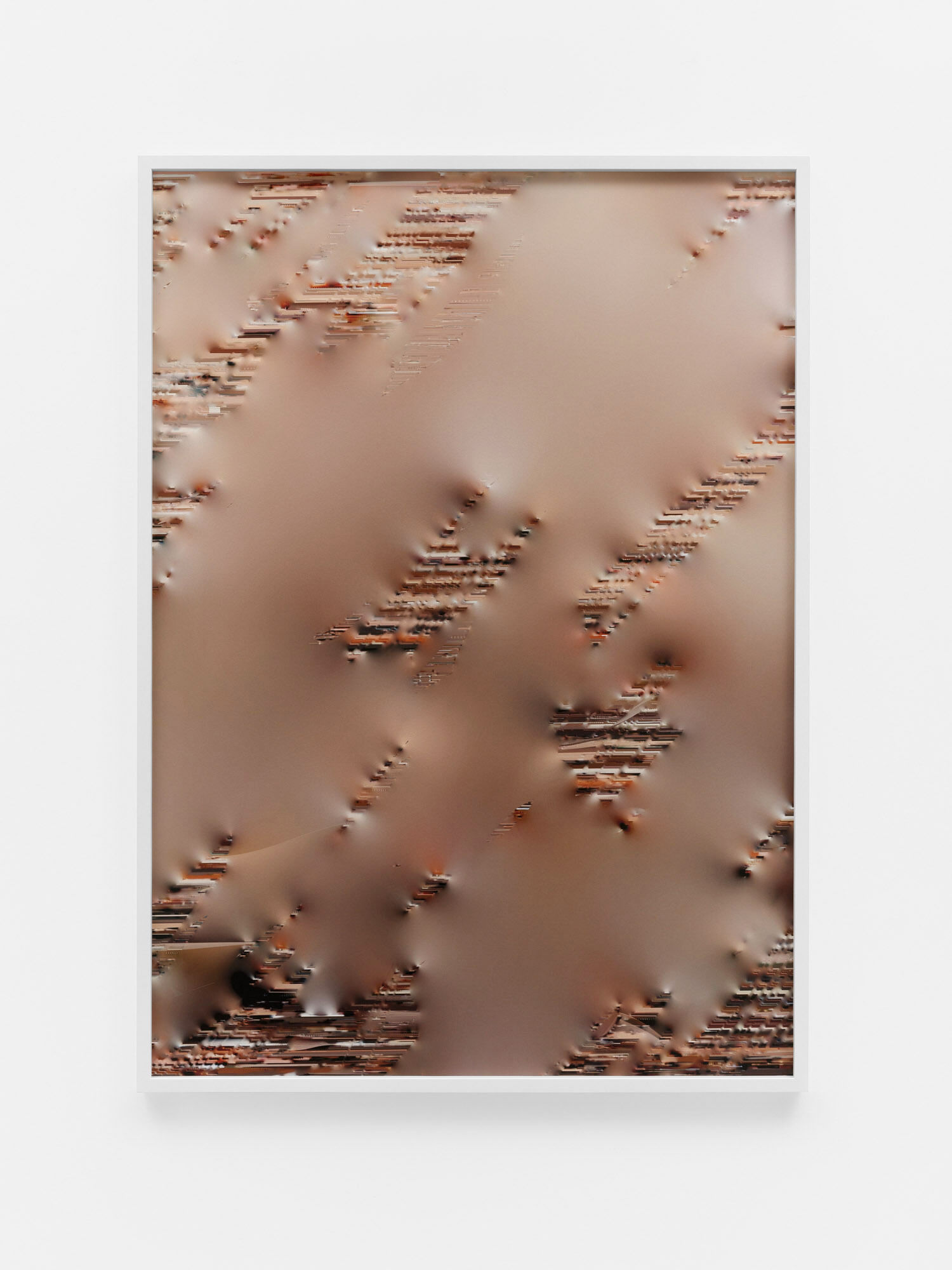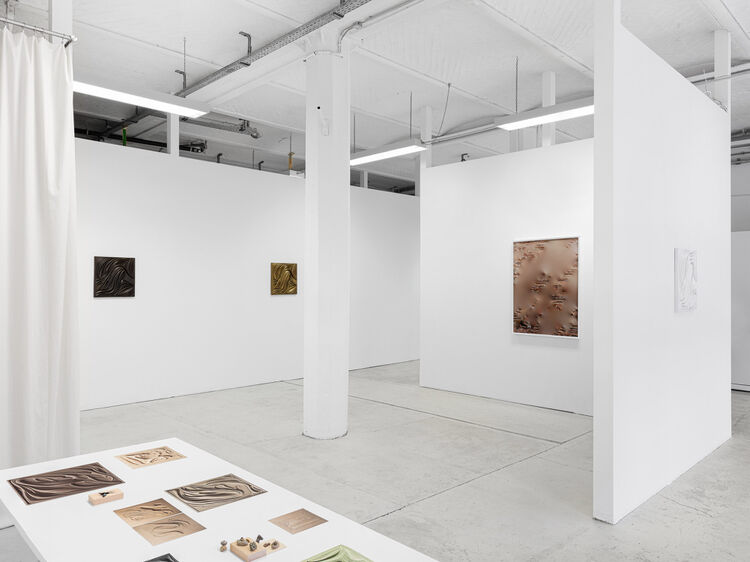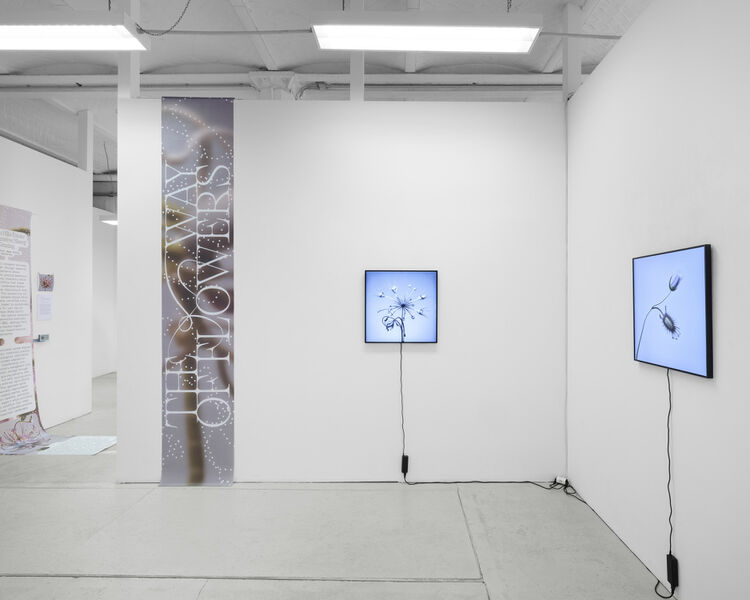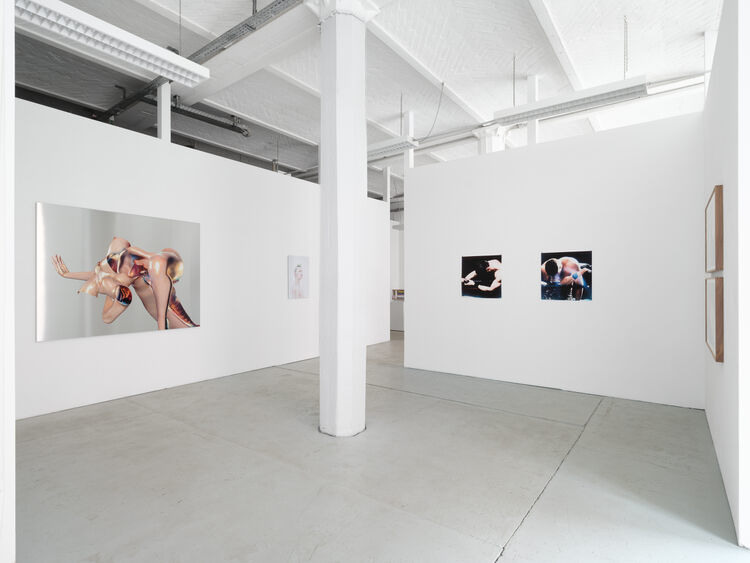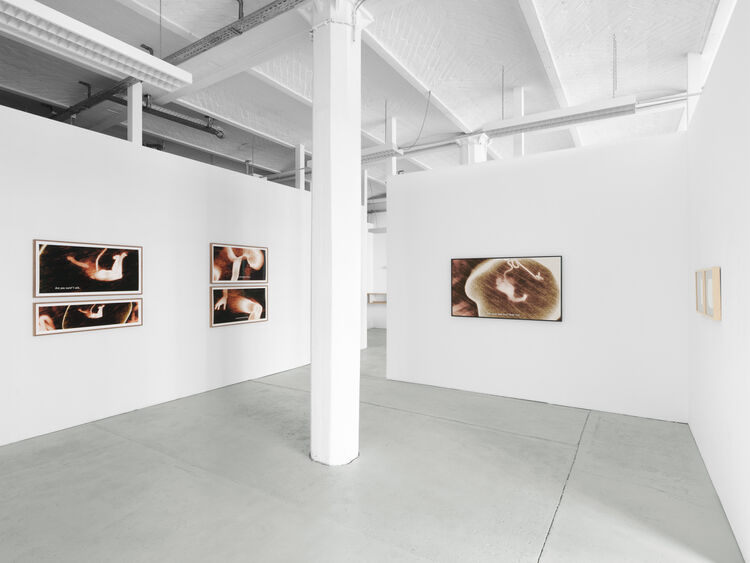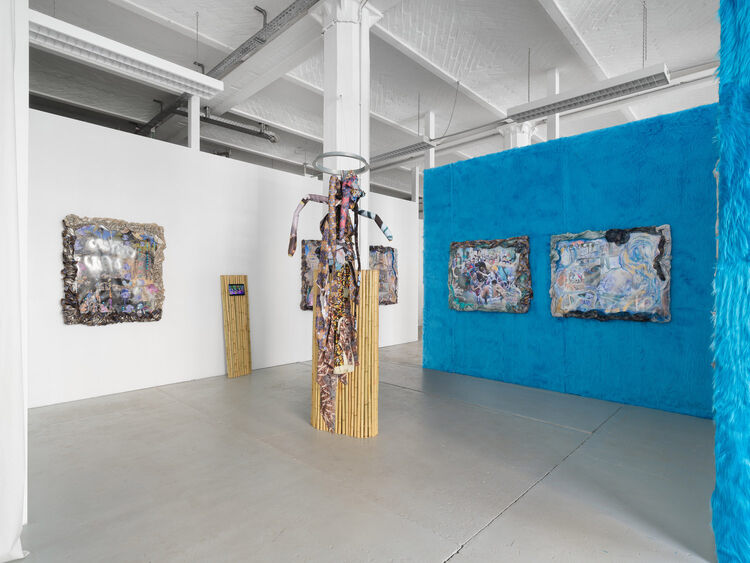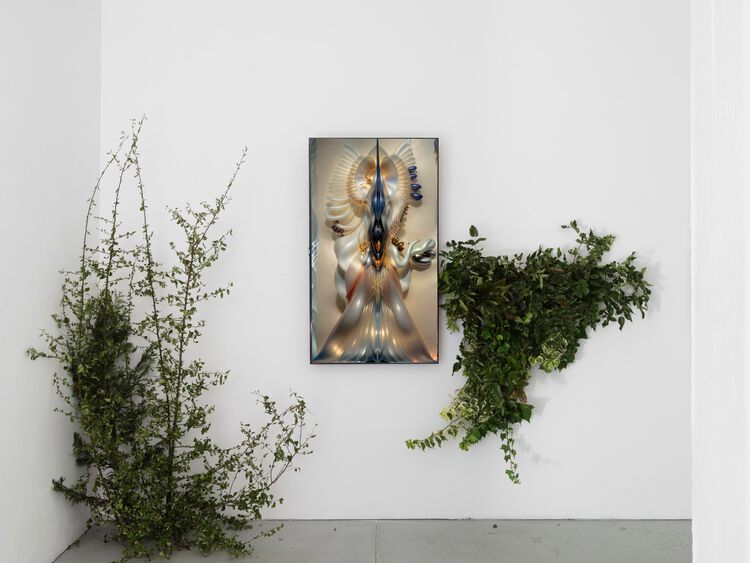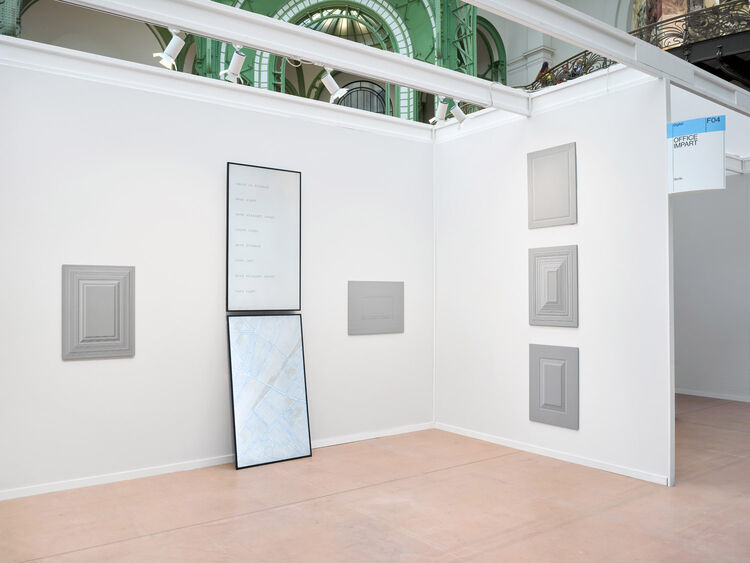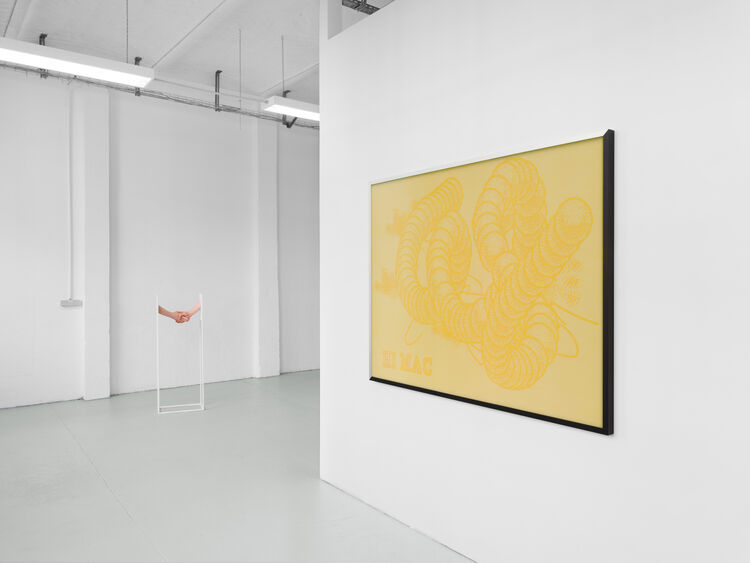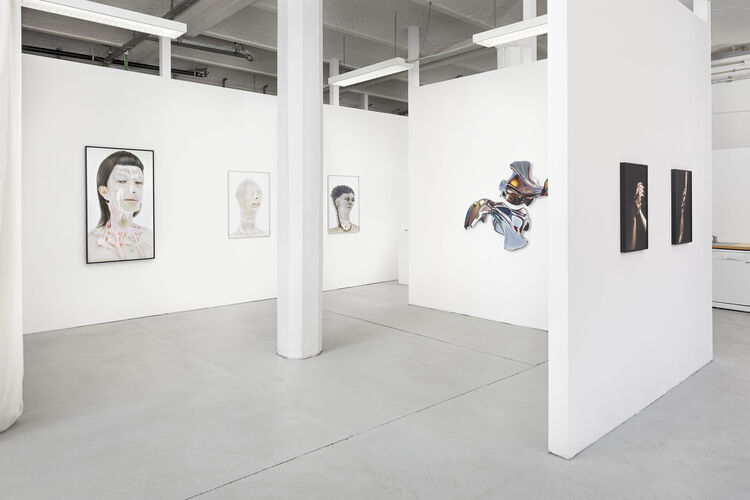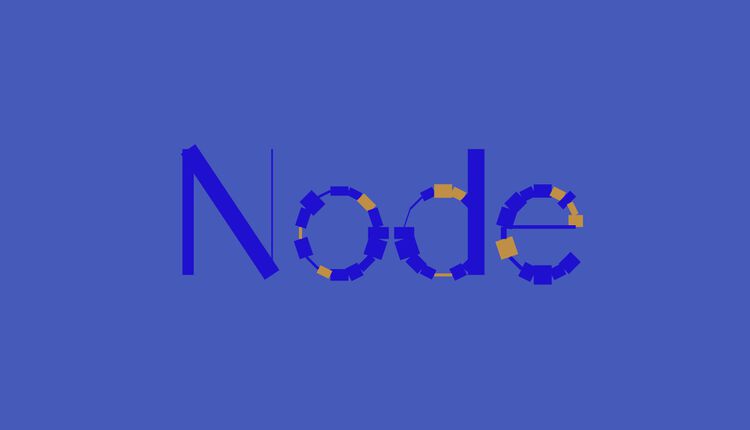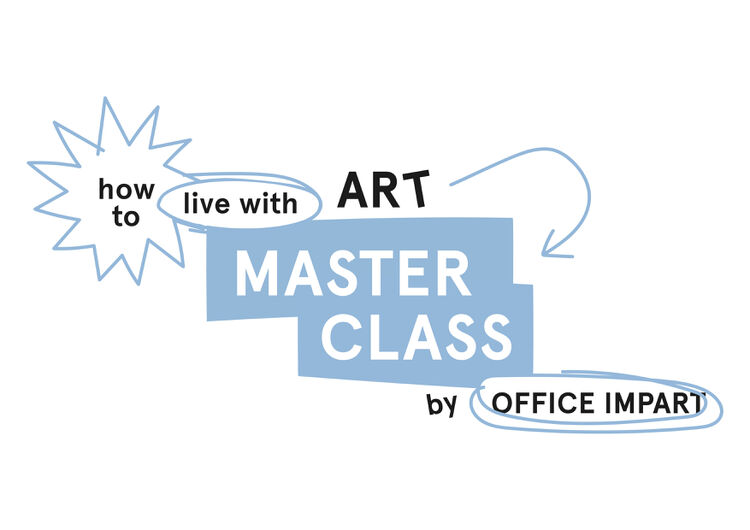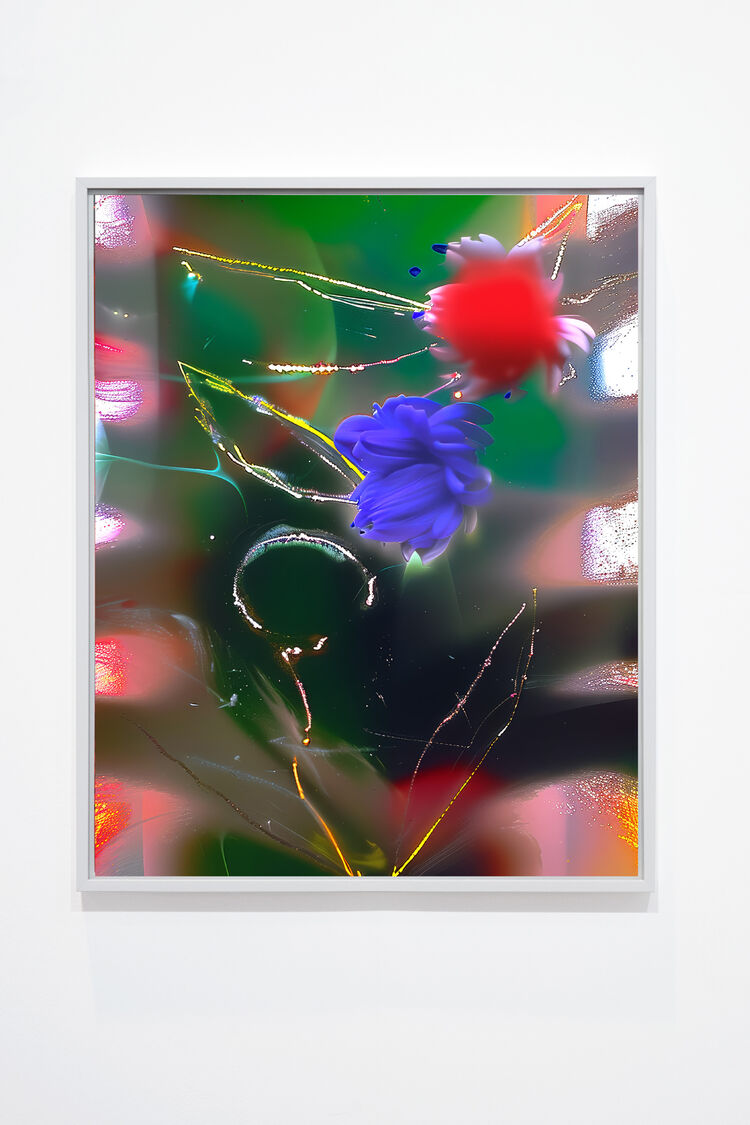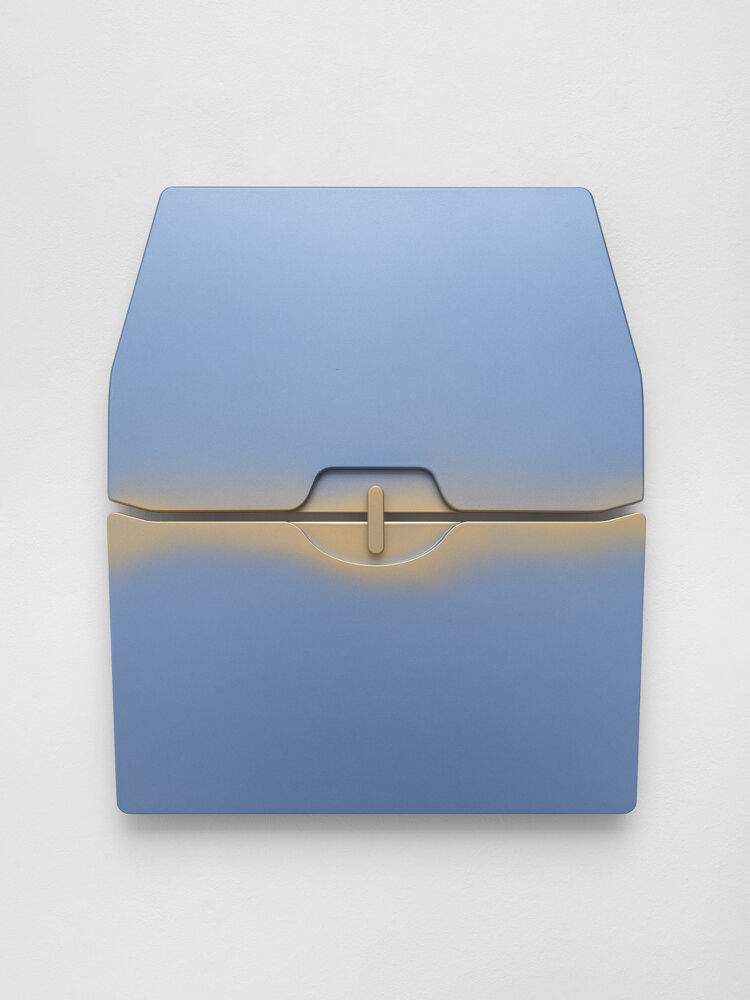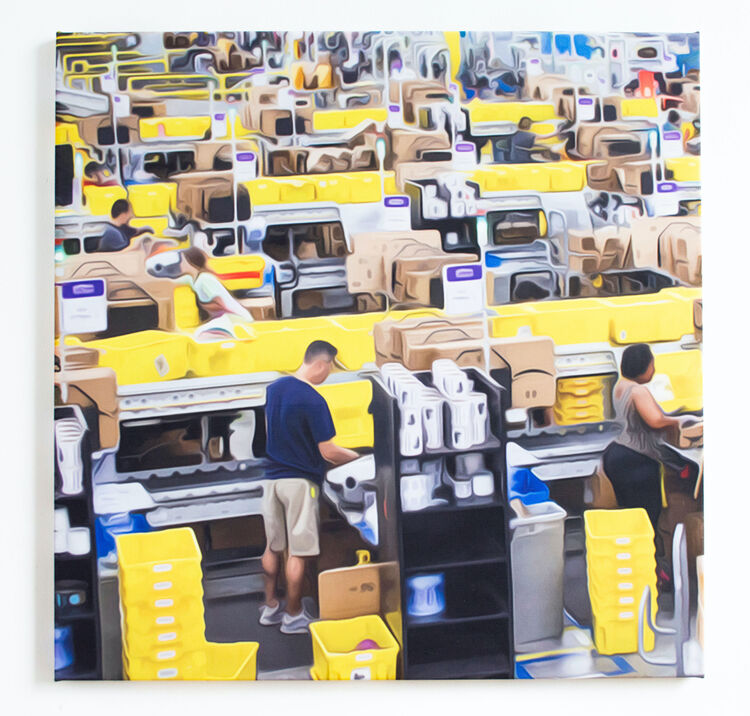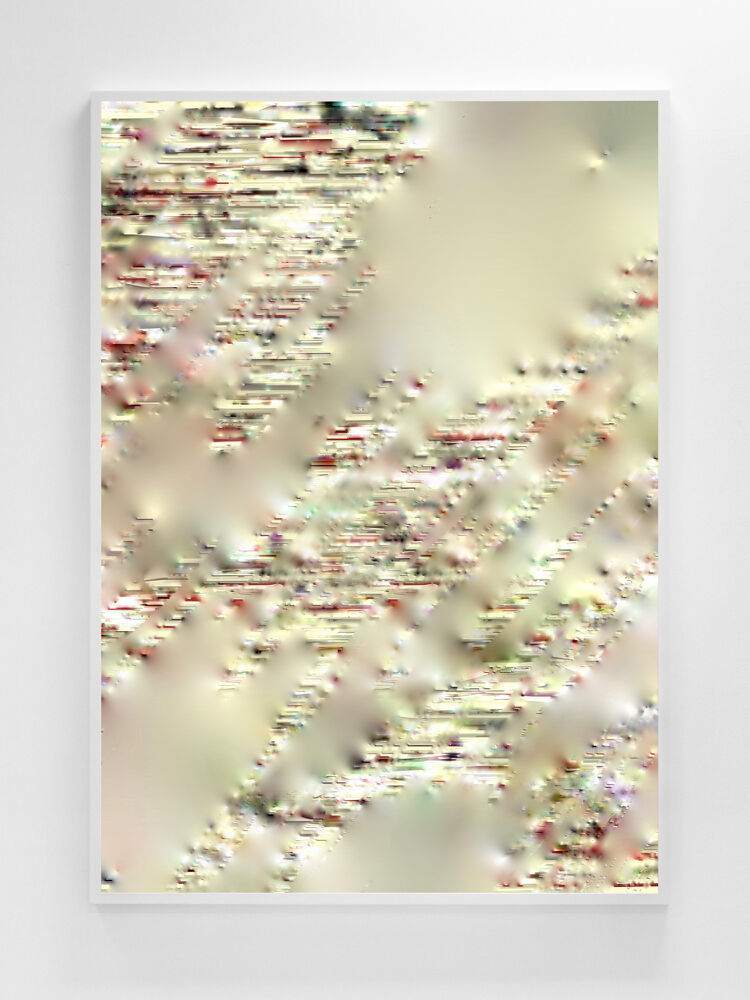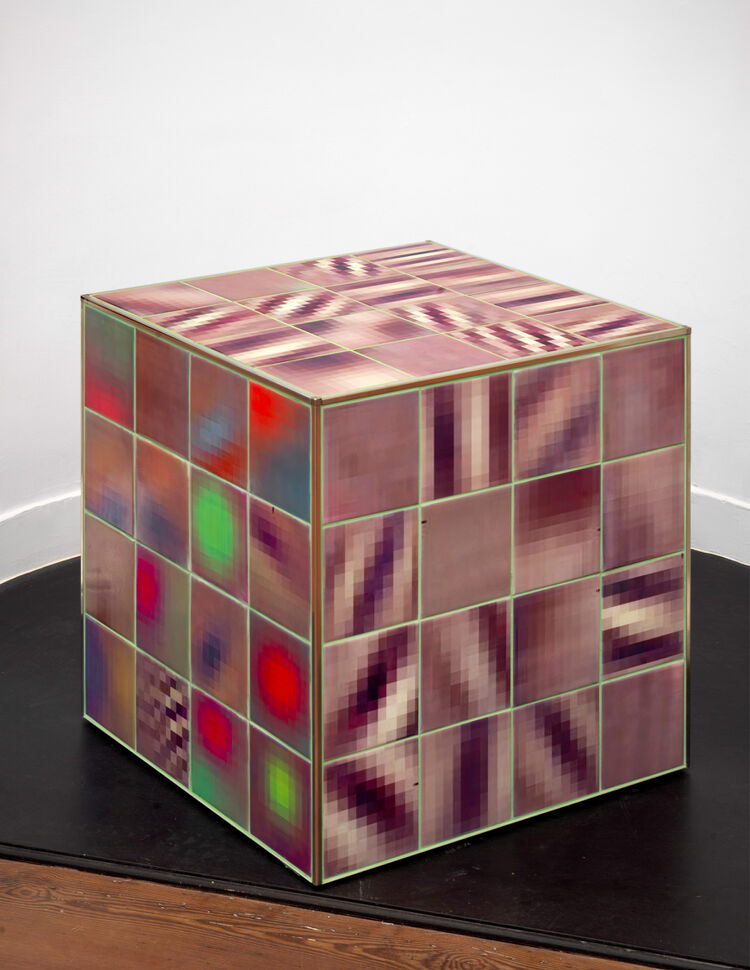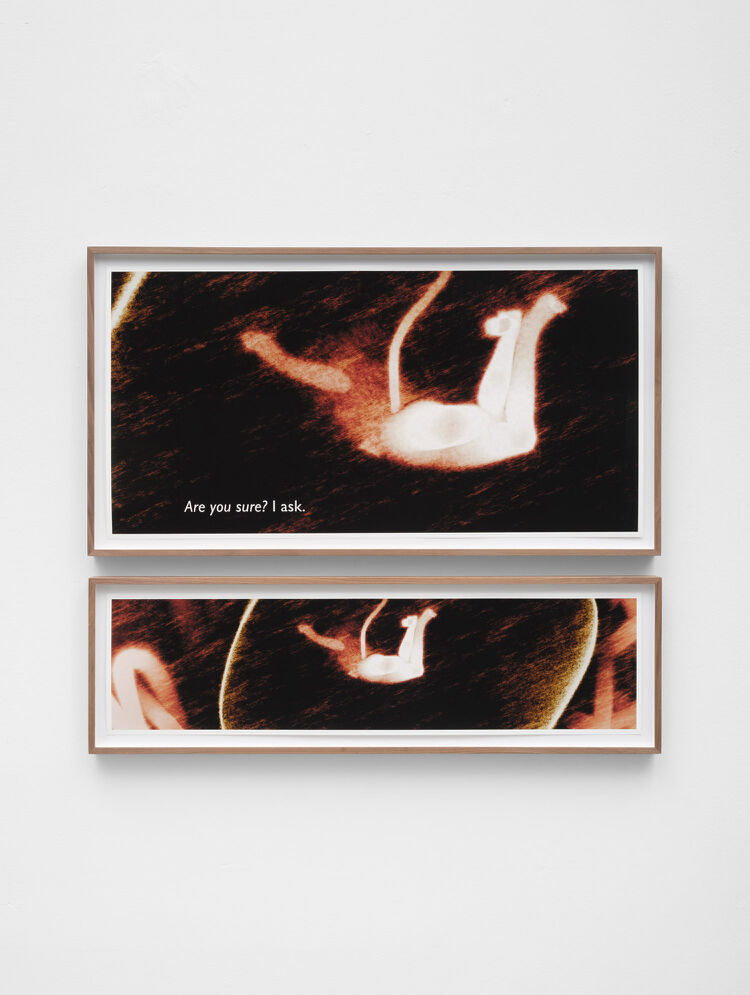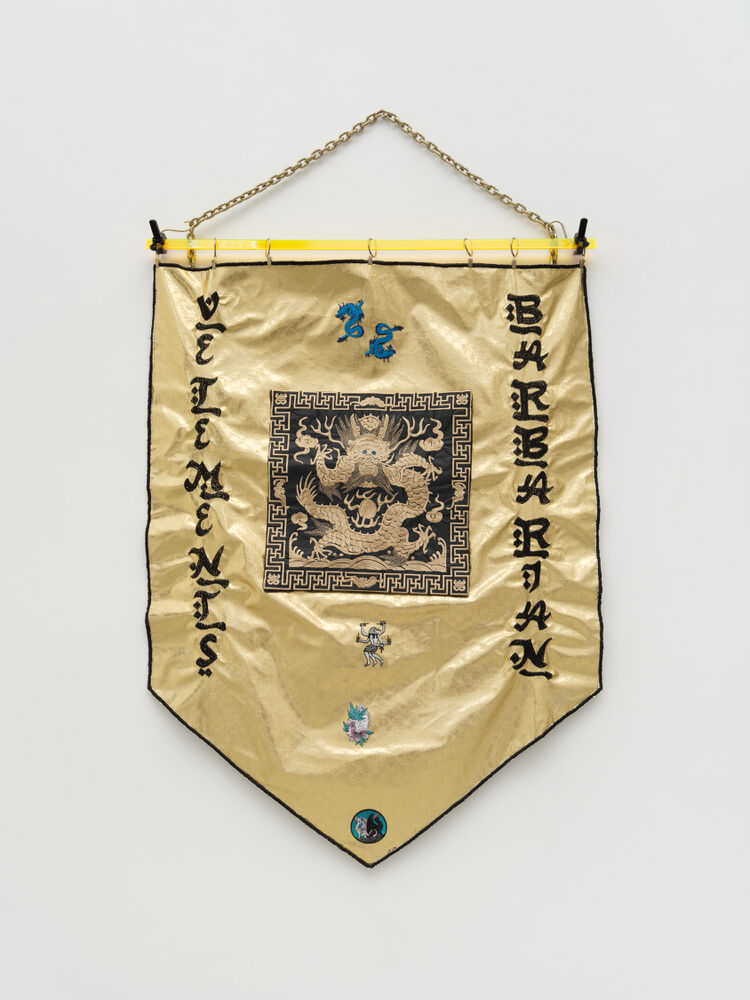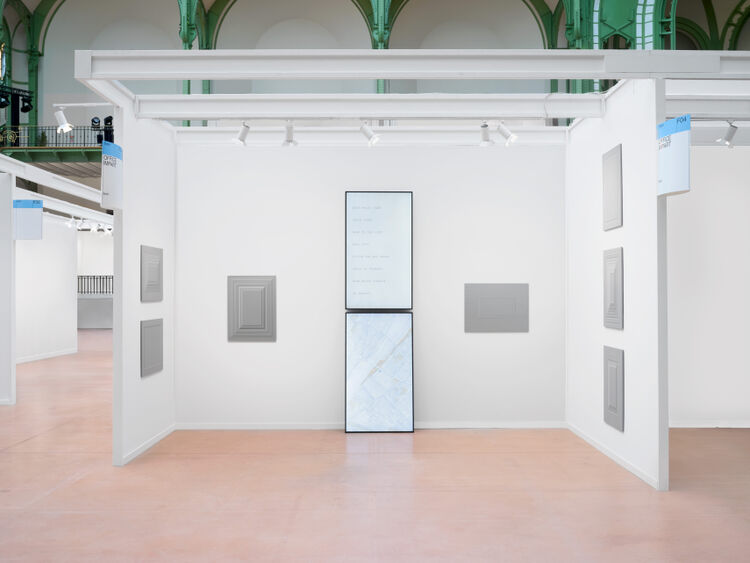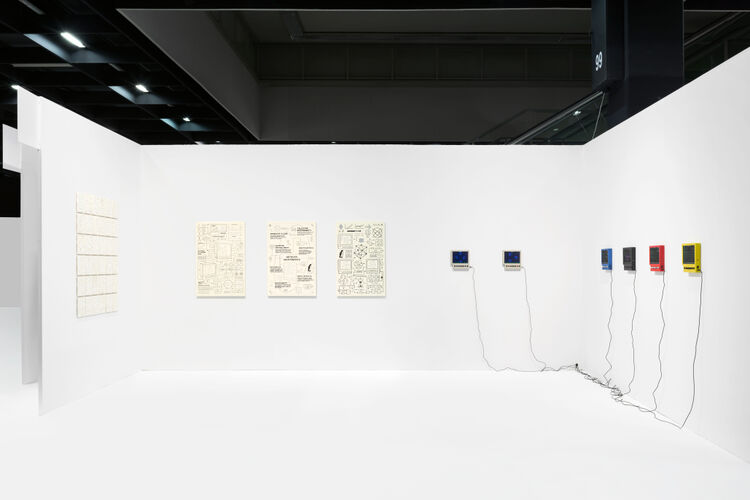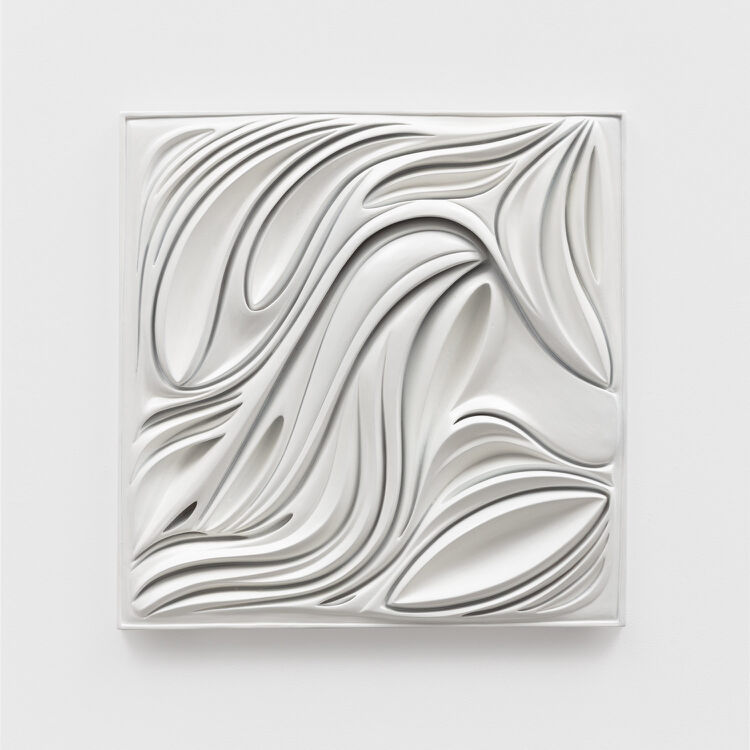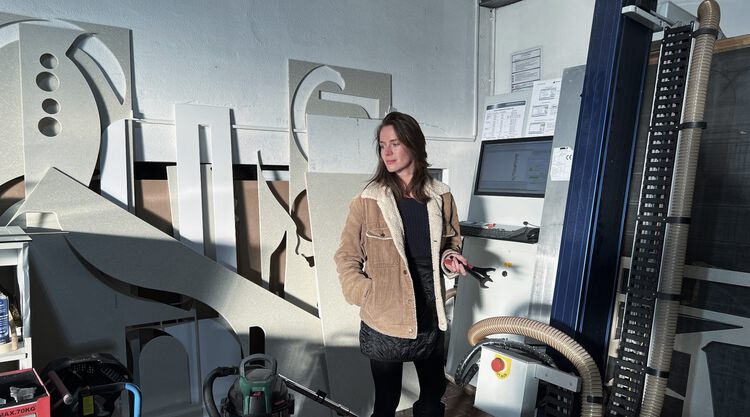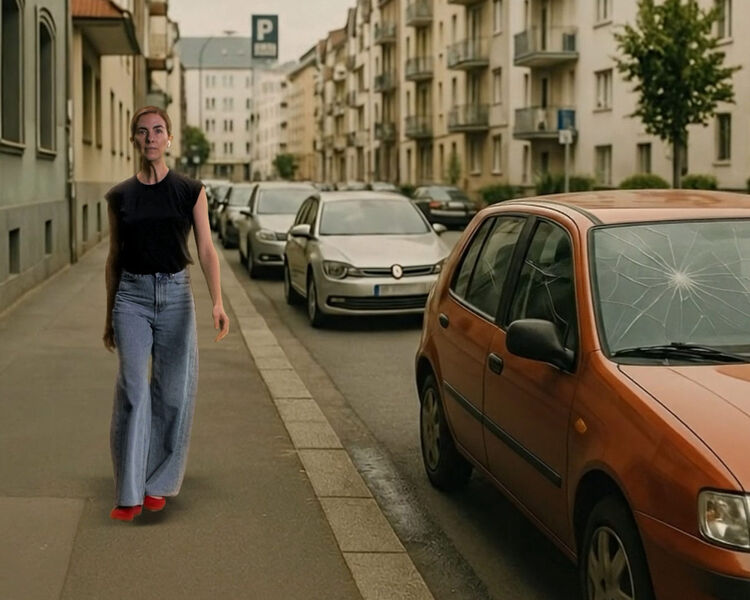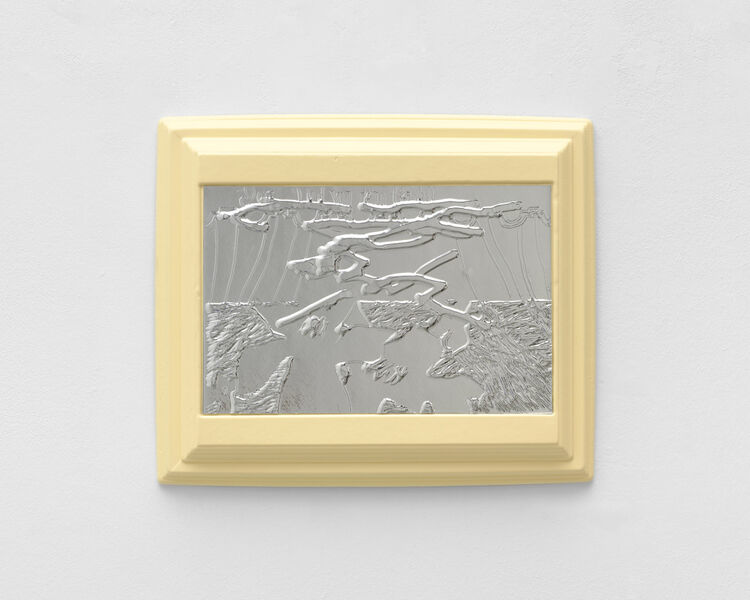Aaron Scheer - Aeonesis
Aaron Scheer
Aeonesis
29.10. – 19.12.2025
Opening
29.10. 2025 – 6–9pm
In Aeonesis, Aaron Scheer explores how our sense of self is transforming in an age shaped by artificial intelligence and technological acceleration. By turning AI-generated sketches into hand-crafted bronze reliefs, Scheer opens up the AI black box. The results are organic amalgams—relics from a distant yet familiar future. Together with works from his DaNA series, Scheer’s third solo exhibition at the gallery weaves the “natural” with the “artificial, ” placing human agency at its center.
Aeonesis
“Unsullied nature does not exist, and there is nothing that can be called ‘the nature’ or ‘the technology.’ Rather, there are only specific movements, sedimentations, and interrelations in the manifold constellations of technocultures, capital, and material entities.”
— Cornelia Sollfrank.
To trace the edges of technology is to find they dissolve into matter itself. In his latest exhibition, Aeonesis, at OFFICE IMPART, Aaron Scheer renders the algorithm porous, inviting the digital and organic to converge into a single, evolving system. Moving between machine logic and human intuition, this body of work charters an unfamiliar terrain where the emergence of new hybrid forms becomes an act of transmutation. Aeonesis unfolds as a meta-biological speculation on reciprocal making—where nature and the machinic converge, blur, and ultimately coevolve. Yet Aeonesis resists the familiar lexicon of eco-digital aesthetics and techno-organic motifs, positioning itself instead as a meditation on the shifting agencies that bind matter, machine, and maker. The works enact a recalibration of creative authorship, as Scheer reflects on what it means to create in an age when generative impulse circulates between algorithm and hand, between the synthetic and the (quasi) sentient.
The exhibition’s centre of gravity lies in the three works titled Aeonesis—two rendered in bronze relief and one in acrystal. Their surfaces ripple between density and translucence, as if in a perpetual state of becoming. The bronzes possess a quiet monumentality: textured strata that evoke geological formation, while the acrystal piece suspends its forms mid-metamorphosis—at once solid and spectral. These works are not representations of process but condensations of it: matter caught between instruction and intuition, inscription and touch. Each bears the imprint of Scheer’s negotiation between algorithmic generation and embodied making.
Scheer’s practice begins in the latent space of the algorithm. Through a process of iterative prompting, he coaxes digital images from textual ambiguity, constructing a visual vocabulary through linguistic play. This process—part poetics, part computational archaeology—is documented through a table work that gathers a selection of AI sketches, handwritten prompt sequences, and organic specimens, including an entomological spider wasp. Here, the digital and biological are not staged as opposites but as interlocutors, each articulating the other’s morphology. The table functions as both archive and anatomy: a site where the artist’s evolving prompt engineering is shown to mirror the slow, adaptive intelligence of natural evolution.
In dialogue with the Aeonesis triptych are two works from Scheer’s ongoing DaNA series—DaNA V and DaNA XXX—which prefigure the exhibition’s concern with mutation and material entanglement. The DaNA series, named after the genetic code it echoes, explores digital materiality as an evolutionary process. In DaNA XXX, fractal geometries seem to calcify mid-growth, while DaNA V crystallises into a form that feels at once fossilised and embryonic. These works operate as aesthetic fossils of computation, tracing Scheer’s long-term dialogue with the recursive logic of machine vision and its uneasy kinship with biological patterning.
Scheer describes his own process as a movement between cognition and surrender: “When I start modelling with my hands, I begin to experience those emotions by a multitude… It’s as though I’m giving birth to something unknown.” He recalls shaping a tree-branch-like form and discovering, through touch, the sequence of its becoming—the skeletal lattice first, then the organic mass that gives it life. “A drop of water transformed so easily into a shooting star, or a seed into a flower; those boundaries seemed to appear and disappear so fluently.” In these moments, the artist experiences not simply the emergence of form, but the dissolution of separation itself: between human and machine, subject and object, self and world.
Scheer’s ambivalent relationship with technology underpins this porous exchange. Having grown up largely without computers, he encountered the digital as something alien—something to be acquainted with rather than mastered. “Art was my gateway to technology, ” he notes. “I’m always trying to humanise it, to look behind the façade.” His approach to “opening the black box” is not one of rational demystification, but of sensorial intimacy. Technology, he argues, is already ecological: “Humans created it, but it’s made of the same natural resources as we are. It’s not an extension—it’s an integral part. I actually don’t understand why we call AI ‘artificial intelligence.’ it embodies collective human intelligence, which we’ve all been contributing to, in one way or the other, for better or worse.’
This ecological framing extends through Aeonesis in both concept and material logic. Across the reliefs and the DaNA works, a leaf folds into an eye, a ripple mutates into a constellation. Bronze and acrystal, resin and algorithm, share a material kinship as agents of transformation. Scheer’s concept of simultaneity—the ability of a form to exist as both organic and digital, abstract and figurative—threads through the exhibition like a pulse.
Ultimately, Aeonesis proposes a vision of coexistence in which technology and nature no longer mirror each other as binaries but resonate as parts of the same continuum. Its works offer speculative artefacts of a shared evolution—a new garden of atopia, neither utopian nor dystopian, but emergent. If the digital once promised transcendence, Scheer’s exhibition instead insists on immanence: a recognition that creativity and consciousness flow laterally across systems.
In the luminous forms of Aeonesis, bronze and code, wasp and syntax, breathe the same air—entangled intelligences suspended in perpetual becoming.
Text by Rachel Falconer, Head of Creative Technology, Goldsmiths University
Photo: Giorgia Palmisano MBP
